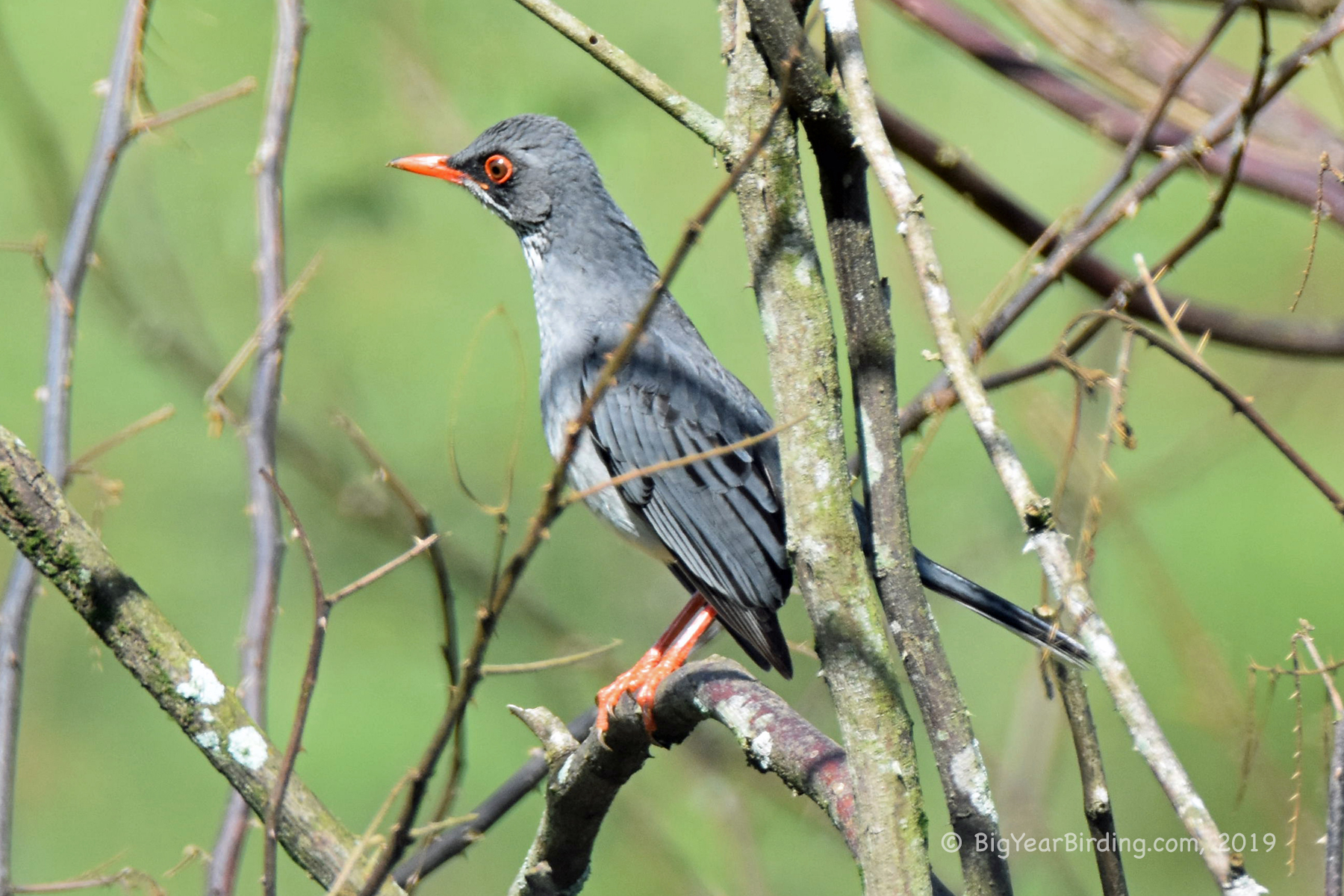The Red-legged Thrush (Turdus plumbeus) is a medium-sized bird that is found throughout the Caribbean, Central America, and northern South America. Adults typically measure between 9-10 inches in length and have a wingspan of around 14 inches. They weigh between 2-2.5 ounces. The males and females are similar in appearance, with the male having a slightly larger bill.
The Red-legged Thrush is easily recognizable by its striking red legs and bright orange-yellow bill. Its plumage is predominantly dark gray or slate-colored, with a white belly and a distinctive white crescent shape under its eye. This bird has a long, slightly curved bill that is designed for picking insects and fruit from trees.
Red-legged Thrushes are resident birds in most of their range, but some individuals migrate seasonally. In the northernmost parts of their range, they may move south to warmer areas during the winter months. They are found in a variety of habitats, including forests, gardens, and parks. They are also common in agricultural areas, where they feed on insects and fruit.
Red-legged Thrushes are active and vocal birds, often seen foraging on the ground or in trees. They are known for their beautiful song, which consists of a series of clear, melodious notes. They are generally solitary birds, although they may form small flocks during the non-breeding season.
Breeding season for Red-legged Thrushes varies depending on their location. In most of their range, breeding occurs between February and June. They build their nests in trees and shrubs, using a variety of materials such as twigs, grasses, and moss. The female lays 2-4 eggs, which she incubates for around two weeks. Both parents take turns feeding and caring for the young birds, which fledge after about two weeks.

